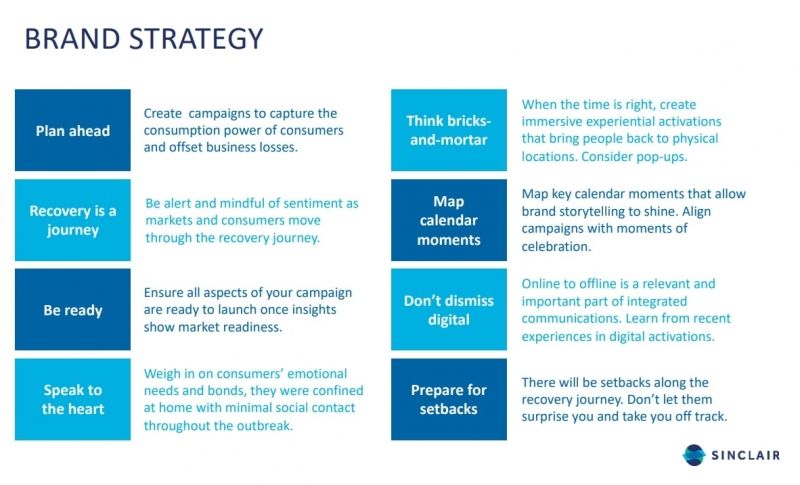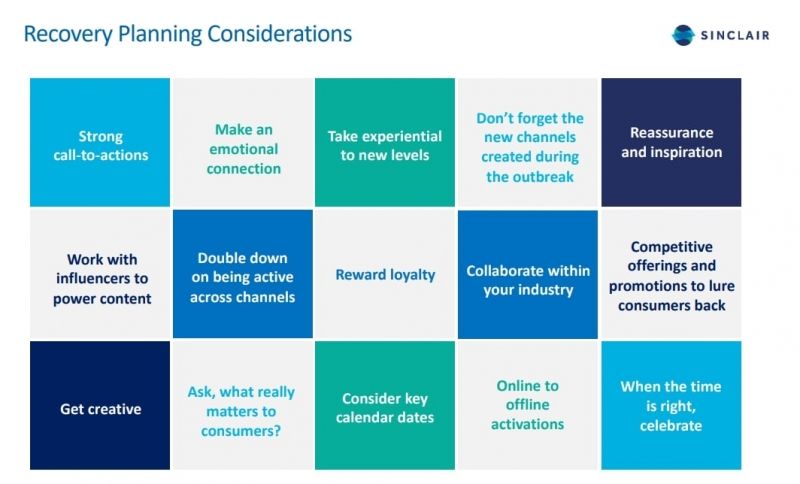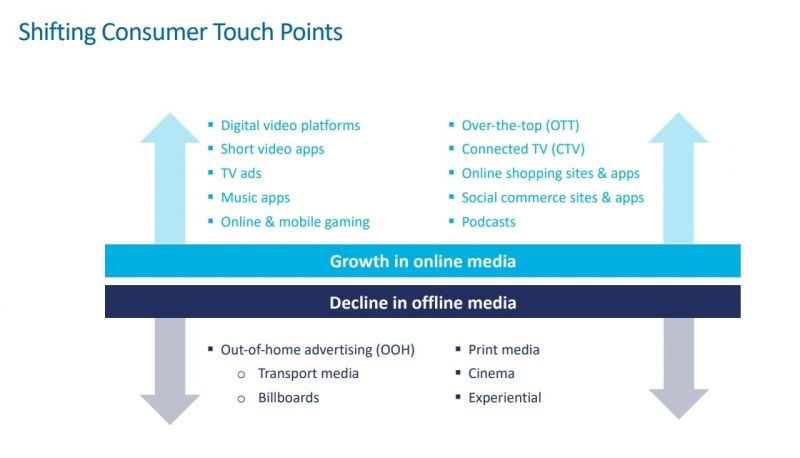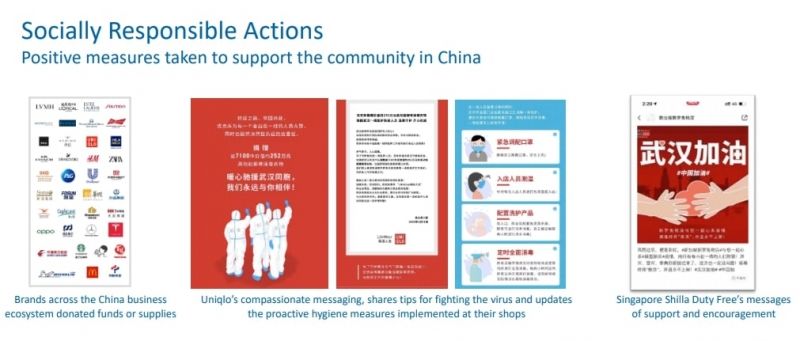
The road to recovery post COVID-19: Steps brands need to take now
share on
We are all aware of the impact COVID-19 is having on the economy. Headlines across global publications are dominated with news around the beating industries such as retail, tourism, aviation and others have taken. But when restriction around social distancing and travel are lifted, brands will need to get down to business.
In lieu of this, Sinclair has outlined how brands can quickly start planning strategies to bounce back post COVID-19. According to the insights report, the right time to hit is when the number of new cases begin to decline and the number of recovered cases overtakes the current cases. This is when brands need to consider launching their brand recovery plans.
But they have to keep in mind that although the outbreak is largely contained, society and individuals will still need time to trust the recovery. During this period, consumers may still avoid going out too often, consciously and unconsciously spending more time at home or in environments considered safe. "Not only are brands in recovery, consumers are too. There are likely to be changes reflected in people’s daily habits and consumption patterns," the report said.
The report added that recover planning takes time, insights, creativity and business-wide commitment. Client side marketers need to as such start preparing and planning early and include a variety of business functions when brainstorming ideas to revive their brand.


Here are some trends to take note of:
- Surge in healthy living and balanced lifestyle will reshape consumer decision-making and buying behaviour across sectors over the next year.
- Unmanned retail and driverless cars advance smart city technology and digital automation as people have adapted to new models and ideas.
- The great work at home experiment leads to growth in tools and technologies that enable remote working.
- After months of online schooling, adaptation to e-learning sees a surge in education technology and pick up of online courses.
- Hospital and healthcare understand new needs and work to update their facilities and work practices following this experience.
- Silvers segment, who were forced to adapt to digital solutions, are a new force of online consumption.
Right now in Singapore, similar to some countries, the Ministry of Health (MOH) has implemented social distancing across eateries, workplaces and others, while self-quarantine and work from home are other measures taken by many employers. In this current situation, brands will be required to pivot to adapt to the homebound economy, and according to Sinclair, healthcare, wellness, hygiene, FMCG and insurance brands are in high demand. The report by Sinclair stresses the importance of understanding the constantly shifting audience perceptions, while taking the opportunity to find white space that showcases each brand’s unique response.
Currently, there is a decline in offline media as members of the public are advised to limit large gatherings, and are not patronising malls and cinemas as the number of cases in Singapore increases. This would then shift consumer touch points, as more will be inclined to be on online media platforms, as opposed to being exposed to offline media.

The social distancing measures comes as countries such as Malaysia, Italy and Spain are in lockdown. Prior to this, companies went into business continuity plans, and reviewing and updating crisis management plan. Several news reports also surfaced at the start of the year comparing COVID-19 outbreak to the likes of SARS and MERS. This led to companies looking into the lessons and experiences when SARS broke in 2003 and MERS' in 2012.
Meanwhile, during an early period of a community outbreak, the ideal steps brands can take to demonstrate their corporate social responsibility, is through being of service to their community. This is a time to understand the needs of employees and key stakeholders, support local efforts to contain the spread and follow local government guidelines on social distancing. “Brands [in countries with early outbreak] can be proactive changemakers in their community by taking positive actions and stepping up to the challenge,” the report said.
While in midst of the initial outbreak, brands might question the appropriateness of continued engagement on social media, examples from China show that brands who continued engagement with positive, supportive and informative messaging about the proactive actions they were taking to be of service to the community garnered positive response.

Brands across industries who contribute by funding or donating supplies or offering support to stakeholders or take actions by reducing rents for mall tenants, stand a better chance at coming out on top.
Related articles:
Publishers and agencies in Asia tackle brand safety amidst COVID-19
Pitches going virtual: Can you still ace the chemistry test?
share on
Free newsletter
Get the daily lowdown on Asia's top marketing stories.
We break down the big and messy topics of the day so you're updated on the most important developments in Asia's marketing development – for free.
subscribe now open in new window
